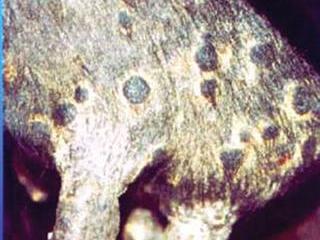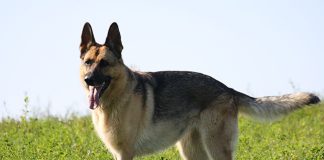
Photo: DH de Lange Elsenburg/George Veterinary Services
Diseases of the udder can lead to a lower milk yield and need swift treatment. Last week, we focused on mastitis. In this issue, we discuss several other problems, affecting healthy udders.
READ: Dealing with Mastitis
Factors affecting healthy udders
Skin problems
Skin ailments can have various causes:
- Mastitis.
In severe cases, the skin of the udder and the teats can peel off, resulting in raw, red, seeping sores.
- Home-made teat dips.
These should be avoided as they can cause skin inflammation. Use only proper, registered teat dips.
- Udder oedema.
An ‘oedema’ is a swelling that occurs when fluid collects in the skin tissue. If it occurs on an udder, the udder will swell and rub against the cow’s inner thighs. This can cause the skin to peel off, leaving raw lesions (surface injuries).
Frostbite
The skin of the teat can become rough and crack if wet teats are exposed to cold winds or frozen bedding areas. It could lead to frostbite, which discolours the skin and makes it swollen and leathery. To prevent frostbite during very cold weather conditions, make sure the cows’ teats are dry before the animals enter their kraals or sheds, or before they go out to graze. Make sure that all bedding areas are completely dry.
Lumps
Lumpy-skin disease (LSD). This causes lumps on the animal’s body, including the udder and teats. It’s a controlled disease – in other words, it can be managed with medication. If you suspect your cow has it, report the problem to your state vet or animal health technician. Infected animals should not be moved to other areas. LSD can be prevented by vaccinating all cattle older than six months and then every year thereafter.
Warts
These often occur on teats and are spread by direct or indirect contact. Although they are seldom serious, they can interfere with milking if they develop near the teat orifice. In this case they should be removed. Cattle can be vaccinated against warts.
Cancer
This can also cause lumps on the udder. So it’s a good idea to ask a vet’s advice if you see any unexplained lumps.
Blue udder disease
The official name for this very serious disease is Klebsiella mastitis. The udder and teats turn a blue-black colour and the skin peels off, milk production drops to almost nothing and the cow suffers from shivering, diarrhoea and painful, swollen joints in the hind legs. The animal may die within a day or two.
Klebsiella mastitis is resistant to antibiotics, notes Dr Inge-Marié Petzer, Department of Production, Animal Studies, Faculty of Veterinary Science, Onderstepoort, University of Pretoria, in an article on www.dairyconnect.co.za
Prevention is your only option in maintaining healthy udders. Dr Petzer suggests the following measures:
- Keep a cow’s immune system strong by ensuring that it has enough vitamins, selenium and zinc in its feed. (Ask your animal health technician or vet for advice on a balanced diet.)
- Keep the cow’s lower rear legs, feet and udder clean. “If the bedding, walkways and holding pens are clean, the cows stay clean,” says Dr Petzer.
- Bedding should be stored dry before use. Most germ growth occurs in the first 24 to 48 hours after putting bedding in a stall.
- Add lime to the bedding. This reduces the spread of germs.
Sources: Udder and Teat Lesions, by MSK Mashishi (Directorate Communication, department of agriculture, in co-operation with ARC-Onderstepoort Veterinary Institute); Observations on Teat Lesions, by Ralph J. Farnsworth, University of Minnesota.
For further information, contact your nearest animal health technician or state/private vet.













